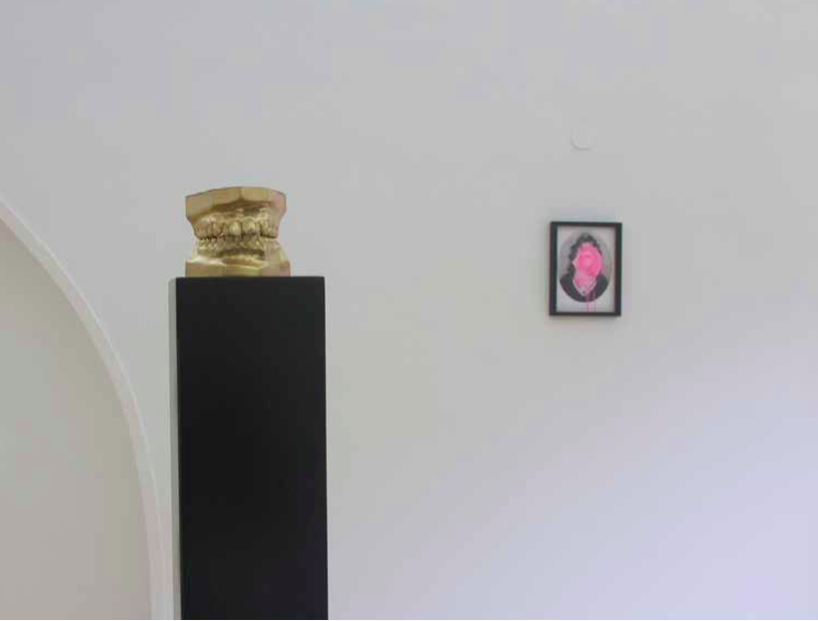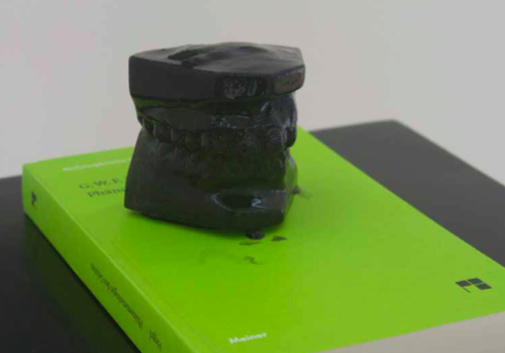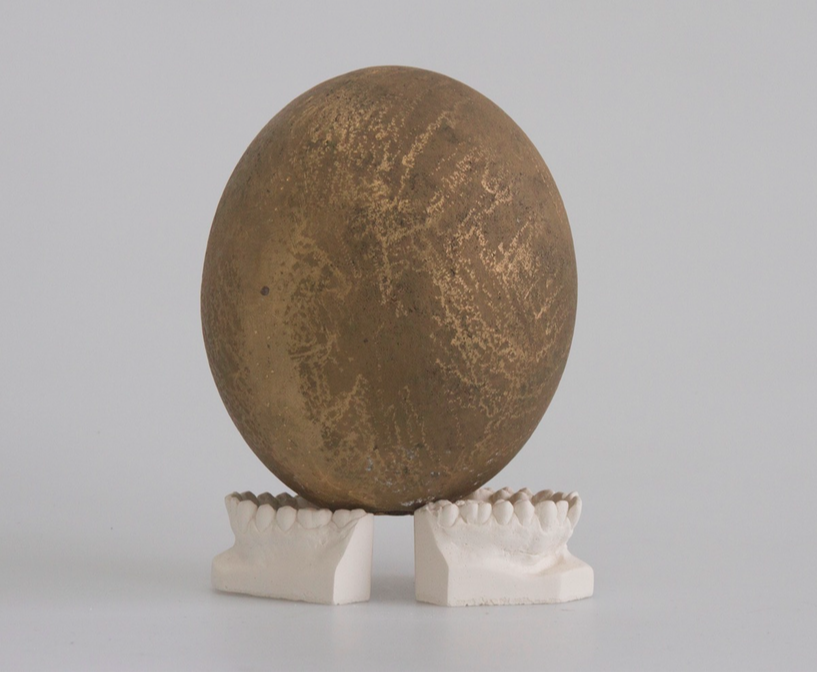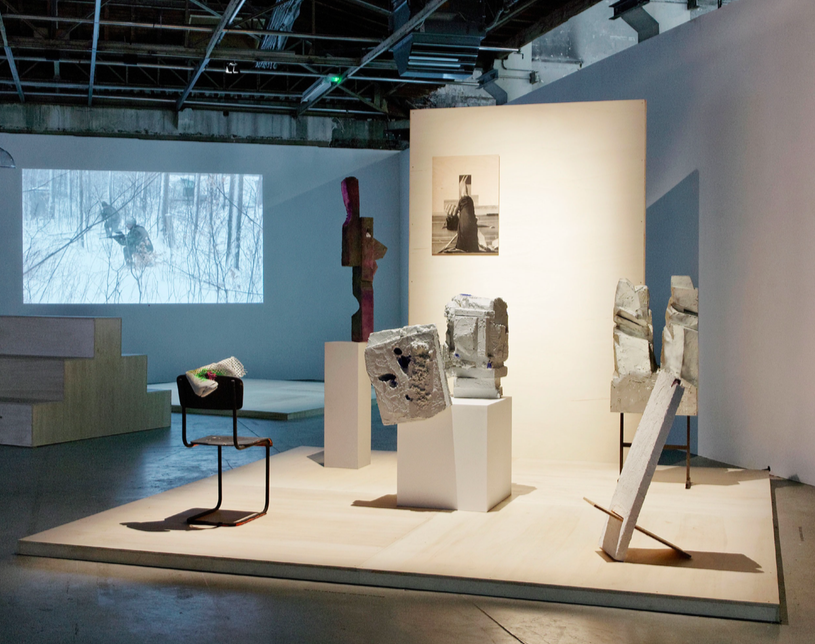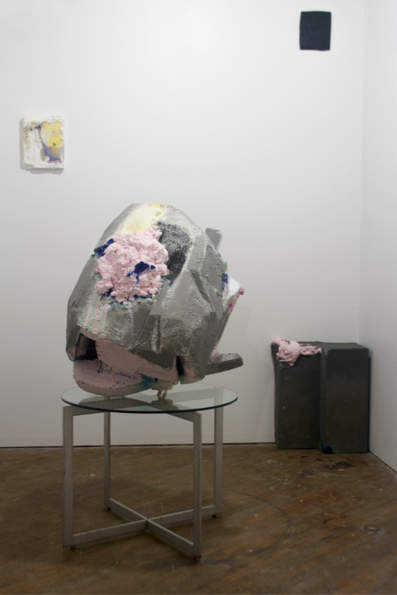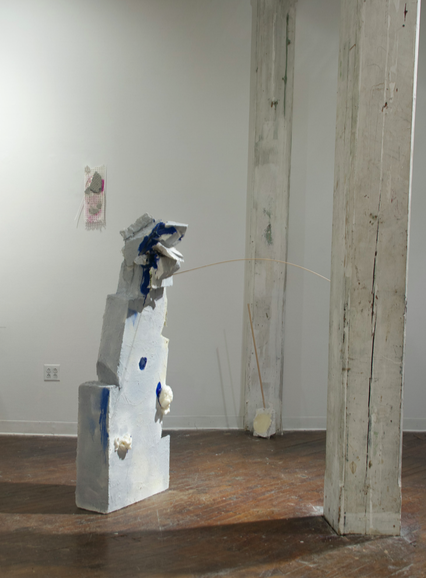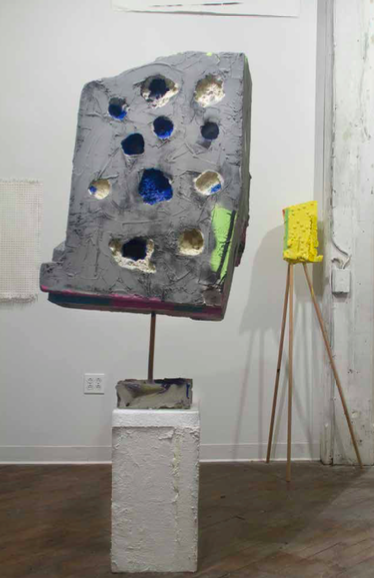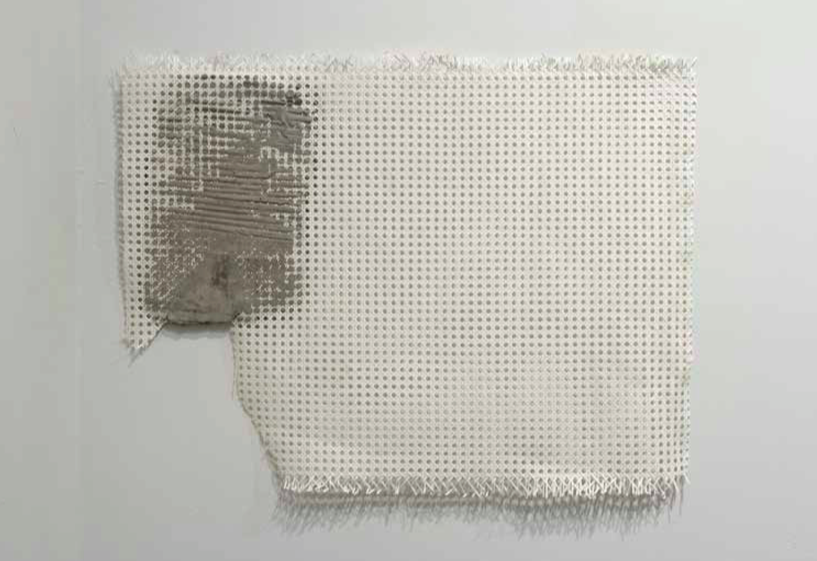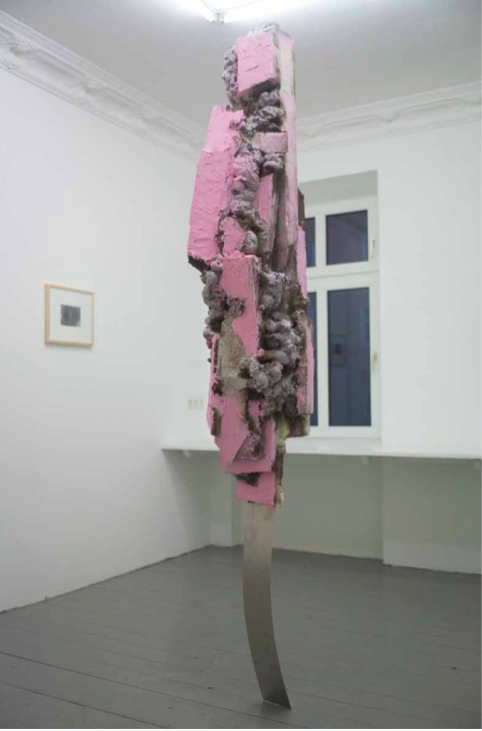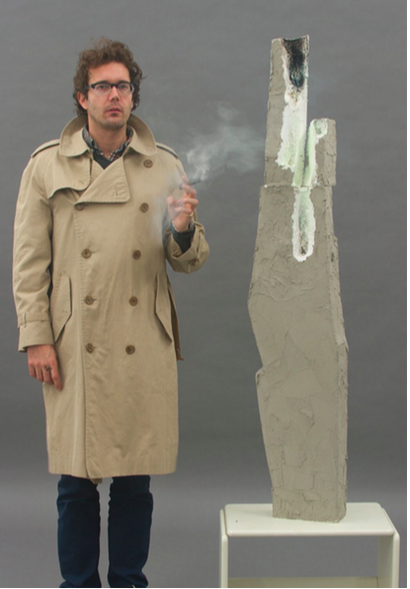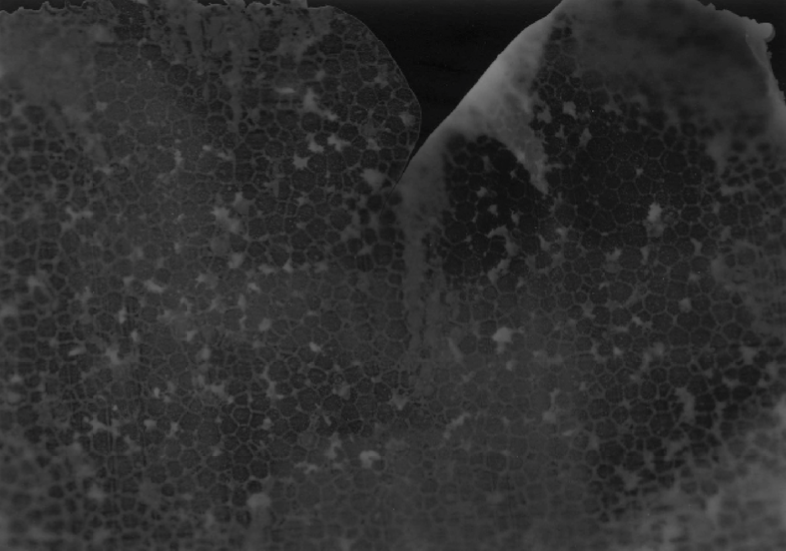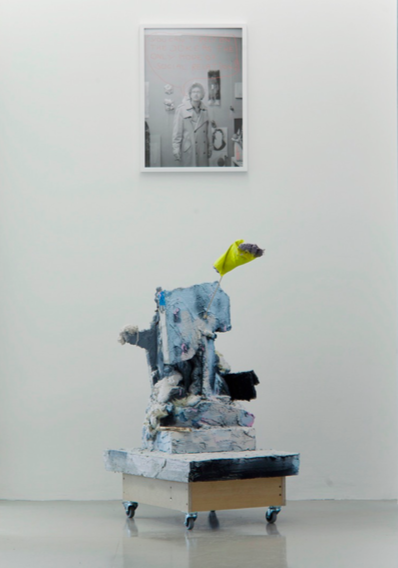a review of Jed Rasula, History of a Shiver: The Sublime Impudence of Modernism (Oxford, 2016) and Acrobatic Modernism from the Avant-Garde to Prehistory (Oxford, 2020)
by Nathan Brown
This essay has been peer-reviewed by the b2o: An Online Journal editorial board.
Jed Rasula’s doctoral dissertation, submitted in 1989 for a Ph.D. in History of Consciousness at UC Santa Cruz, is titled “The Poetics of Embodiment: A Theory of Exceptions.” His forthcoming book with Oxford University Press is titled The Lower Frequencies: Genre and Extravagance in the Novel. From exception to extravagance: that relay offers an apt resumé of Rasula’s critical oeuvre, which has been consistently devoted to the discrepant, the illegible, the exorbitant, the eccentric, and the superfluous. Rasula’s first critical book, The American Poetry Wax Museum, studies the “reality effects” of anthologization and canon formation from 1940-1990. But while this is indeed a work of literary history and sociology, it amounts to a reckoning with the metaphysics of genteel cultural coercion, a study of “canontology” as that which signifies “the criteria for existence—the modes of being and appearing” that are stipulated by canons (471).
Rasula is himself an anthologist of another stripe. Imagining Language (MIT, 2001), coedited with Steve McCaffery, convenes a vast assembly of linguistic deviation, experiment, and expansion across three millennia, organized conceptually and thematically so as to produce discordant congruities brought into theoretical and contextual focus by rigorously rhapsodic section introductions. Burning City: Poems of Metropolitan Modernity (Action Books, 2012), coedited with Tim Conley, assembles a vertiginous array of efforts by international modernists to include the cacophonous provocations of urban experience within the field of the poem through parataxis, visual forms, and aural effects. These are anthologies that do not reproduce canontology but rather explode its parameters.
It is in his book This Compost: Ecological Imperatives in American Poetry (University of Georgia Press, 2002) that Rasula goes farthest toward undoing distinctions between the roles of literary critic, anthologist, and poet. The book traverses the sweep of American poetry from Whitman through Pound, Olson, and Zukofsky to such contemporary figures as Susan Howe, Nathaniel Mackey, and Rachel Blau DuPlessis, while referring to dozens of poets along the way. As it does so, This Compost deploys a unique style of quotation whereby texts are woven together in compound threads, constructing associative bonds between passages from different poets distinguished only by a tilde (~), with names and titles cited sequentially in endnotes. Amid these we find passages of Rasula’s poetic prose, distributed across subsections of a continuous essay and thinking with rather than interpreting the poetry—drawing out conceptual, historical, imaginative implications and consequences with often startling lucidity:
The peculiar skill of any art is in making all that is available of itself be surface; even its depths (like the picaresque profundities of Moby-Dick) are disclosed only as surface events. This puts writer and reader on more or less equal footing, because although each has a different approach to the text, once the text is in place the surface it makes available is haunted or shadowed by an obverse, the obvious perversity by which it affords glimpses of eaches and anys where every and all appear to lurk. Both sides are never visible at once, although a fundamental tropical urge is to make both sides available in such rapid succession that, like a coin trick, a continuity of the alternating surfaces blends into one demonic animated texture that is posed as identity and surplus indistinguishably. (71)
In This Compost, it is as though the surfaces of poems had descended into the darkness of the underworld along with their reader (or wreader, as Rasula sometimes writes, emphasizing the co-implication between reading and writing) before emerging once more into the light, now transfigured by their passage into possibilities of relation they always harbored among themselves.
Rasula’s work cannot be subsumed under a “methodology,” but if there is one word that captures the enabling condition of his mode of thought it would modernism. The exceptions his work theorizes and the extravagance it displays are akin to the exteriorizing force of modernist rupture, to the self-surpassing energies that go by the name of modernism and continue to agitate the present. Imagining Language delves into three thousand years of the archive, but the inspiration for that transhistorical editorial labor stems from the revolution of the word carried out by modernism, projected forward and backward from the rift it opens in the history of the letter, the line, and the law of genre. In The Shadow Mouth: Modernism and Poetic Inspiration (Palgrave, 2009) and Destruction was my Beatrice: Dada and the Unmaking of the Twentieth Century (Basic Books, 2015), Rasula turns his attention directly toward this subject matter, but it is only in his two most recent volumes that the full scope of his immersion in modernism across the arts comes into focus. History of Shiver: The Sublime Impudence of Modernism (Oxford University Press, 2016) and Acrobatic Modernism from the Avant-Garde to Prehistory (Oxford University Press, 2020) are companion volumes carving forking paths from early German Romanticism through Wagnerism to the proliferation of international avant-gardes and the global convulsions of jazz before following the ungrounding of these upheavals back to prehistoric precedents in cave painting, reading modernism as a “renaissance of the archaic.” With the prodigious and perhaps unprecedented range and variety of materials these volumes convene across nine hundred pages, Rasula has demonstrated that it is indeed possible to develop a research practice and a prose style adequate to the sheer profusion of modernist precedent—if not through an unattainable approximation of totality then by producing a sufficiently complex experience of its irreducible inventions.
The signal claim of History of a Shiver is that “the first modernism was Romanticism” (73). If the eighteenth century querelle between the ancients and the moderns remained “a neoclassical affair” (73), we might deduce from this claim that modernism emerges within modernity not through the rupture between the classical and the modern, but rather between the classical and the romantic. The impetus of modernism—its sublime impudence—stems from the self-conscious affirmation of this break, signaled in particular by a movement beyond classical genres. Rasula argues that modernism might be “understood in broad historical terms as the self-overcoming of genres in all the arts, for it’s this above all that illuminates the distinguishing trait of modernism while making legible its basis in Romanticism” (74). The specific Romanticism to which Rasula refers is the circle of writers concentrated in Jena, Germany, in the late 1790s, including Friedrich Schlegel, A.W. Schlegel, Novalis, Friedrich Schleiermacher, and Ludwig Tieck. Through their journal, Athenaeum, the Jena Romantics made the overcoming of separations between genres and art forms their explicit project through such keywords as Romantische Poesie, Mischgedicht, or Roman, which constellate their ambition to inaugurate forms of writing, thought, and sociality fusing art, science, philosophy, and politics while displacing the opposition of literature and criticism. “To affirm creative activity in terms of perpetual expansion and self-overcoming,” writes Rasula, “is not so much to envision the completion of a work as to valorize a project exceeding any momentary incarnation in a particular work” (56). Through this “feeling for projects” affirmed by Friedrich Schlegel, Jena circa 1800 becomes a fragment of the future it anticipates and constructs, with unclassifiable works like Novalis’s Das Allgemeine Brouillon making manifest a mode of striving not only metaphysical or historical, but above all formal—a demand that forms become adequate to all that exceeds them.
History of a Shiver coalesces around the recognition that such striving involves a passion for synesthesia: “The Mischgedicht—or blended composition—fanned the flames of an ambitiously synesthetic compulsion revisited with increasing urgency throughout the nineteenth century” (61). Moreover, in Rasula’s account the vehicle of this synesthetic compulsion was music. Due to an ineffability apparently exceeding that of other arts, and “because music was the art form least encumbered by mimetic criteria” (61), it served as an endlessly mutable locus of synesthetic reverie, such that experiences of “seeing music” or “listening to incense” pass over from idle analogy to transgenerational project, conveyed by the Wagnerian Gesamtkunstwerk from Romantische Poesie to early twentieth century avant-garde experimentation. Rasula is attentive to the irony of one particular art form taking on, through synesthetic revery, the burden of overcoming particular art forms—but what is irony? And how are we to understand the specific nature of this particular irony? It is by posing and indeed answering questions like this—which up the ante of art historical observation—that Rasula is able to illuminate the undercurrents of a century’s obsessions with an order of metaphysical insight equal to his objects of study, here in response to a fragment by Schlegel:
“Irony is the clear consciousness of eternal agility, of an endlessly abundant chaos”—in short, the primordial cosmic potentiality from which art (and all creative effort) derives. Irony is the romantic salutation of a finite being greeting the infinite cosmos, graced by reciprocal genuflections of cricket and leviathan. According to the principle of the fragment, every creative act leaves some trace of its “infinitely teeming” energy in the domain of the possible. Although the romantic concept of irony was mostly applied to literature, its artistic consequences are closely linked to the increasing eminence of music during the nineteenth century. Disclosing patterns of “eternal agility,” accompanied by an ironic awareness of the fragility of musical forms, music became the Trojan horse that smuggled Romanticism into modernism. (58-59)
It is not only ironic that music is positioned as the art capable of overcoming divisions among the arts; music is the irony which bears and conveys that Romantic imperative through the nineteenth century: the eternal agility of a medium with no object and no delimited spatial frame, temporally restless and composed of fleeting tones that die upon the air into which they are born and within the senses they populate. It is the clear consciousness of endlessly abundant chaos, communicated by music, from which modernism draws its sublime impudence from Romanticism, an ironic consciousness that extends to the dialectical relation between medium specificity and interarts experimentation, each pole of that relation propelling the other into generative contradictions. Taking up Carl Dalhaus’s notion of the “pathos of emancipation” (23) implicit in the contradictions of medium specificity and synesthetic yearning, the first half of History of a Shiver tracks tantalizing efforts to “surmount the input/output ratio of sense-specific arts” (24) from the throes of melomania and the delirium of Wagnerism through the subtractive operations of symbolism, the untimely pastorals of pageantry, pictorialism, and dance in California, invocations of a fourth dimension and a sixth sense, and a theoretical excursion through the ideal of endless melody.
Chapters on symbolism and on pictorialism and dance exemplify Rasula’s discrepant approaches to defamiliarizing modernism. “Drawing a Blank: Symbolist Retraction” is a beautiful, fluent meditation upon the “propensity to vacate the stage, reconvene space as magnitude, and generally clear the ground in order to start from scratch” (116). This “particular motif of retraction or clearing a blank,” Rasula argues, “is the salient feature of symbolism that persisted into modernism” (116). It’s not only the argument itself but also a subtle appreciation of the complex emotional textures of this subtractive operation that lend Rasula’s account its singularity. “I feel myself more trusting of the nameless,” Rilke intones, and as we read, that feeling of trust enters into the vacancies of Hammershøi’s interiors; into the “simple feelings” of Maeterlink’s plays and puppet theater (137); into the ghostly evanescence of Fernand Khnopff’s paintings, or their serial repetition of figures upon undeveloped ground; into portraits by Auguste Levêque, Mieczyslaw Jakimowicz, Odilon Redon, and Dante Gabriel Rossetti, wherein closed eyes bespeak a silent inner life; into Mallarmé’s compositions in which the lines “mustn’t be composed of words; but of intentions, and all the words must fade before the sensation” (121). Moving among so many names—some familiar, others less so—Rasula helps us sense the nameless blank of indeterminate meaning in the background or below the surface of what we thought we knew, of what we have been looking at for a long time:
Symbolist painting exudes a kind of thematic huddling, suggesting the predatory nature of certain subjects, as though the subjects chose the painters and not the other way around. So those scenarios of silence and absence seem on the verge of releasing some sound, like the skittering of rats or a sudden flutter of pigeons. (145)
To see sight renounced is to be asked to consider another sense (143); to trust the nameless is to let the object sink into indeterminacy, into resonance with undefined attributes—so symbolist retractions fertilize synesthesia and merge with the ineffability of music by evoking interiorities or elsewheres subtracted from recognition, suggesting reminiscence, and suffused with significance.
The following chapter on pictorialism and dance in turn-of-the-century America follows such obscure figures as photographer Arnold Genthe into the neo-Hellenic fantasies of Carmel by the Sea, or poets Bliss Carman and Richard Hovey onto the open road in their Songs from Vagabondia (1894). Rasula reconstructs affinities between the bucolic idylls, hieratic poses, flowing gowns, and pagan mysteries of American pageantry and Pacific arts colonies with fin-de-siècle Europe through such transatlantic crossover figures as Isadora Duncan and Loie Fuller, imbibing and interpreting Wagner, praised by Mallarmé. Photography not only documented the bodily postures and physical mystique of such figures, it also sculpted, curated, and framed their production according to the contrasting subjective ideals looking both forward and backward at the switching point between centuries:
Photography provides a vivid study of contrasts at that fin de siècle moment when Jean-Martin Charcot was documenting the convulsions of his hysterics for scientific purposes, while dance and body culture manuals were deploying a similar range of corporeal expressivity to illustrate modern standards of healthy living. In the genteel and ultimately redemptive petition to art by pictorial photography, the female form emerged as a tasteful return to Hellenistic animation—animus tamed by anima. (183)
Moving from Muybridge and Étienne-Jules Marey’s experiments with the photographic documentation of movement to Diana Watts’s The Renaissance of the Greek Ideal and Genthe’s photographs of Duncan, his collaboration with Percy Mackay (leader of the American pageantry movement), and his link to the photographic pictorialism of Stieglitz’s Camera Work, to Edward Steichen’s affiliation with the same journal, Rasula tracks the curious capacity of burgeoning art photography to shuttle between pastoral bohemia, mechanical scientism, nostalgic Hellenism, and Hollywood glitz. Formal problems of lighting and pose link these apparently discrepant photographic worlds with symbolism, while documentation of outdoor dance links pictorialism to the “barefoot modernism” of Duncan and the Arcadian dream of Vagabondia. Anne Brigman would photograph a series of wilderness nudes posed on outcroppings in the high Sierras, evocative of H.D.’s poems in Sea Garden and of “new dimensions” of “the human form as part of tree and rock rhythms” (198). Such projects exemplify Rasula’s reminder that “the influential view of modernism as a series of formal advances in various arts has obscured the extent to which such advances were stations in a spiritual quest.” “It has been too easy,” he notes, “to recognize formal issues from outside, while the tangle of hunches and beliefs that actually drove someone’s engagement with his or her art can seem inscrutable and messy. Once something like an idea emerges, it seems to have little to do with the plangent psychological and material muck out of which it arose” (189-190). Rasula’s rare gift is his capacity to make that plangent substance and that tangle of hunches manifest, not only prior to but in the ideas they generate and by which they are displaced.
The arabesque associations between major and minor streams of incipient modernism in History of a Shiver flow into Acrobatic Modernism like elaborately winding tributaries into a vast river, itself composing manifold currents. Understanding the structure of the book is crucial to grasping its method. We find three central chapters—“Make it New,” “Jazzbandism,” and “Multiplied Men”—constructed as something like encyclopedic catalogues. Here the task is to track down and include as many nodes in these thematic networks as possible: the writing moves briskly between names, practices, movements, and contexts, enumerating and briefly characterizing declarations of fidelity to the new in all its forms; the international scope and protean reception of jazz as a global phenomenon; invocations of plural selves and heteronymic displacements of identity. The sheer profusion of these chapters is at once exhausting and exhilarating, as the Preface anticipates:
My advice to the reader, then, is to regard the text like a big crowd on Times Square, Berlin’s Alexanderplatz, Mexico City’s Zócalo, or Trafalgar Square in London. As you venture into the swarm, let the kaleidoscope spin. After a while patterns will emerge in prismatic rotation, and the poor old tired horse of modernism may turn out to be a zebra after all. Count the stripes, if you will, or at any rate, saddle up. (vii)
One might add “buckle up,” in preparation for a ride that charges onward with the velocity of Marinetti’s automobile retrofitted for the freeway.
Yet these three central chapters are bookended by five others which proceed at a somewhat more reflective pace, and which pursue more or less continuous lines of investigation through the opening and closing sections of the volume. The first three chapters—“The Ache of Modernism,” “Luminous Sores,” and “Gathering Hay in a Thunderstorm”—elaborate an approach to artworks as “pathic receptacles,” compounds of thought and feeling deposited by making, poiesis. “Signs in any medium,” Rasula notes, “propagate more signs even as they purport to close in on the object of representation or on some intended meaning.” Thus,
To speak of an artwork as a pathic receptacle indicates this migratory propensity, this condition by means of which our sentience gets the better of us, as it were, thanks to which artifacts attain a life of their own. The transfigured object harbors a twofold pathos: on the one hand, like a corporeal dismemberment, the work is poignantly removed from the body that nourished it; on the other hand, in defiance of the medical model, the work itself (the disjected member) becomes the phantom sensation. (61)
The notion of artworks as phantom sensations, and of prosthesis as constitutive of embodied apprehension and production, is theorized in greater detail and with striking insight in Rasula’s dissertation on “The Poetics of Embodiment.” Here it offers an approach to artworks traversing apparently discrete forms or distinct media and attentive to “a biomorphic insistence, a biologically exigent extension of corporeality” attending the work of artists whose “generative impulse is profoundly embedded in a somatic manifold” (62).
In “Luminous Sores: The Pathic Receptacles of Modernism,” this approach enables a deep reckoning with the impact of the Great War on the relation between modernism and modernity. What distinguishes Rasula’s treatment of this well-worn topic is a concept of the artwork adequate to understanding how the war brought into “cataclysmic focus” (64) a wrenching recalibration of sensory ratios and a thoroughgoing displacement of generic norms that was already well underway. The “acute materialization of pathic intensity” focalized by the war is “a rupture that tells us, poignantly, that art is of the body and the body’s traumas extend to art” (115)—“that art’s receptacles hurt when they undergo transformation” (114). From the perspective of the synesthetic dialectic developed in History of Shiver—wherein synesthetic yearning becomes lodged in particular artforms, transgressing their distinctions precisely through intensifications of their address to particular sensory channels—we are in a position to understand how Nietzsche’s response to the Wagnerian Gesamtkunstwerk registers the pain of modernism in the element of both formal and historical transformation, given the body’s inadequacy to the demands of reception: “the absolute arts tear us to pieces, as it were, and we also enjoy only by bits, now as ear-people, now as eye-people, etc” (qtd on 115). “The siren call of ‘absolute art,’” writes Rasula, “endowed each sense with an enhanced perspective of loss—what it had to shed to partake of the absolute—as well as the advantages of further refinements along the paths of ‘eye-people’ and ‘ear-people’” (115).
This clarification illuminates not only anticipations by artworks of the sundering of bodies by the war, but also competing claims of medium specificity and inter-arts experimentation as central to modernism. The apparent contradiction of those accounts attests to “the paradoxically enabling trauma of productive loss” (126) traversing the unsettling of both generic and historical regularities throughout the nineteenth century. To position the war as ruptural cause of modernist culture is to occlude an understanding of the war itself as an effect of complex historical determinations stemming from the upheavals of modernity—those which shape as well the affective field in which artworks express the pain of transformation, and in which they become adequate to register the force of the war’s catastrophe. One must have suffered a long time to be adequate to the crisis of suffering, and have been greatly transformed to endure such transformation. When we read Hegel’s critique of Enlightenment and his philosophical transubstantiation of the French Revolution, we may be acutely aware that the pathos which also suffuses Beethoven’s Eroica is preparing the ground for those artworks of the twentieth century which take up ruptural traditions in the name of the new. Rasula cites Loy’s “Apology of a Genius”:
We come among you
innocent
of our luminous sores (127)
Among whom? one might ask. As Rasula will show, the genius of modernism is immersed in many thousands of years of cultural history, but it displays its wounds “among” the denizens of modernity. The sores of modernism illuminate the darkness of modernity like an underworld, by torchlight drawn from its own fires. Such a torch would be a prosthesis, supplementing the body’s lack, displaying its need, connecting it with the elements. The “excess of deficiency” (127) from which modernism suffers is bred in the bone of modernity, and its projects—whatever their explicit predecessors—stem in particular from the attunement of Jena Romanticism toward the dialectical overcoming of discrete artforms and genres.
In “Gathering Hay in a Thunderstorm” (Chapter 3), Rasula draws Aby Warburg’s research toward his Bilderatlas and his concept of pathosformel into contact with H.D.’s poetry and the meditations of her Tribute to Freud, in order “to explore the affective force of antiquity as a healing agent” (129). As the chapter weaves together H.D.’s vision of writing on the wall in Corfu with her dream of a caterpillar writhing under salt, with the intensities of her bond with D.H. Lawrence, and with the religious impulses of her sensibility, the depth and subtlety of Rasula’s psychoanalytic learning becomes apparent. There’s a sensitivity to the intersection of psychic trace and historical complex that imbues this material with a density of insight which the volume slows down to register. Meanwhile, the linking of H.D.’s case not only with Warburg’s art historical investigations but also the fissures of his dual identity as psychiatric patient and scholar of Renaissance art realizes the concept of pathosformel through the elaboration of its parameters. Warburg “sought the disclosure of otherness as such, in any form” (130), and Rasula takes the pursuit of this disclosure as an occasion for its advent: Warburg’s experience of his own body as akin to “a telephone girl during a storm or under artillery fire” (133) is fused not only with the “heraldic electricity” (159) of H.D.’s disposition, but also with the shock of cinematic experience recorded in Mann’s Magic Mountain and the harrowing cuts of the film Borderline, starring H.D. and Paul Robeson. Rasula limns the pathic intensity registered by Warburg in Renaissance paintings as a “sense of density evoked by the intractable body” (136) and lodged in works of art, reading the psychic distress at issue as manifest in the scholar’s life as much as in the concepts he develops. It’s the shiver that passes from one to the other that passes as well from Warburg to H.D., and that gives us to think modernism writ large as akin to a caterpillar writhing under the sprinkled salt of modernity—as an image of somatic convulsion. Citing Maeterlinck—“perhaps illnesses are the various and authentic poems of the flesh” (161)—the chapter offers a profound if understated meditation on the inextricability of illness and health, with culture caught at the crux of their chiasmus.
These opening chapters of Acrobatic Modernism enable us to imagine the quiver of the tightrope as it is traversed, or the sudden shudder of the fine line as one shifts to keep one’s balance above the void. The “acrobatic” is a matter of virtuosity, to be sure, but also of corporeal peril and exposure in the midst of the performance. The saltimbanque of Baudelaire’s “La Muse Vénale” not only shows off her charms, but does so through a “laughter soaked with tears that no one sees, / To split the sides of the vulgar.” The “hectic multiplicity” of modernism is riven by the very energies propelling its performances, such that “whether there’s a choice or not, modernism demands an acrobatic response to change, and change is the legislative circumstance of modernity” (11). Poised on the cusp of transformation, or undergoing its crux, the acrobat makes a living of the impossible, takes it as a test or “metabolic provocation” (12) productive of elaborate postures. Such performances take their toll, and Rasula’s title inspires attention, throughout, to the ways in which exposure to extremity—even when pulled off with aplomb— demands contortions as painful as impressive. “Historical mutation is the elective burden of modernism” (22) and artworks bear, as prostheses, the pain of the amputations they supplement, even those proceeding the birth of those who produce them.
Precedent becomes the closing theme of this book, as “the new” intersects with the question of how much precedent invention can include. A chapter on “The Renaissance of the Archaic” is preceded by a chapter on “The New Mythology,” and these form a diptych at the hinge of prehistory. The metaphor is meant to evoke Rasula’s discussion of the symbol:
In the original Greek, symbol refers to the two halves of a pledge split in two, so each half bears within it the potential for reunion. Moby-Dick is possessed of the perfect symbol: insofar as the white whale is symbolic, it’s because it is the living counterpart (and possessor) of Ahab’s lost leg. In that sense, then, a symbol emits phantom sensations, woeful registers of somatic penury. In addition to the spatial aspect of its object status, a symbol is also a temporal indicator. The sundered pledge attests to past truncation, portending the future reunion when the two halves of the pledge are reunited. (348)
Modernism is a sundered reunion with the deep past: reunion becomes the very act of severance that proclaims the new even as it claims a destiny in common with the archaic.
“The New Mythology” takes the landmark journal Transition as a signpost, dwelling on its publication of the “Work in Progress” that would become Finnegans Wake, with its sense of historical simultaneity wherein (as Siegfried Giedion claimed), “present, past, and future are not chopped off from one another but merge into one uninterrupted fabric” (296). But as usual, Rasula brings the usual suspects (Joyce) into contact with lesser-known figures, such as the German Surrealist Wolfgang Paalen or critic Carola Giedion-Welker, the latter becoming a kind of guide through both closing chapters. Giedion-Welker’s lucid commentaries on Joyce, Arp, Moholy-Nagy, Ozenfant and Jeanneret, Satie and others others illuminate the stakes of Dada, Constructivist, and Surrealist artworks and their archaic precedents. It’s her attunement to the problem of sensory ratios, the requirement of renovating human perception through mutations of proportion demanded by modernity, that Rasula particularly values in her perspective. “Reminiscence of the archaic,” she writes of Giacometti’s sculptures, “is this delicate awakening of the form from out of the plane of stone, this swelling up and down of the plane.” And of Arp she notes that the material is infused with “something growing, welling, gliding which admits neither of formal nor mental frontiers and fixations” (298). We might glean from such descriptions that, for Giedion-Welker, the reminiscence of the archaic in modernity involved a measureless formal flux or interior pressure transforming the dimensions of the work in accordance with historical forces traversing the present and connecting it with a distant past. What’s interesting in these passages is that the language is not one of rupture but of undulation, as if the deepest past were sculpting from within the immediacy of the present without the regulation of proportional laws.
The inspiration of the archaic suggests a return to origins, to inaugural moments, thus fusing the new with the old as that which was not old when it took place, and it is this simultaneity of taking place which accounts for how allegiance to precedent strictly entails commitment to the unprecedented: the first instance of what once was, right now. The incipient curvature Giedion-Welker sees in the awakening of modernist forms to archaic precedent (think of Gaudier-Brzeska) is manifest in the dynamic, rather than static, equilibrium urged by Piet Mondrian, the kinetic rhythm advocated by Naum Gabo, or the asymmetrical balance of typographical design adopted by Jan Tschichold (302). Rasula positions the values and inventions of Constructivism, its realization of the apparently abstract in the concrete practice of making, as part of the pursuit of a new mythology—and in this sense in continuity with the project of Jena Romanticism. “We admit,” Naum Gabo acknowledged, “that we do not what what ‘reason’ is, what ‘myth’ is, where free fancy begins, and where knowledge ends,” and it was this uncertainty about parameters of knowledge, perception, and imagination in modernity which forced a production of the new often inseparable from a recovery of the old. Gabo declared that “the aim of our time consists in creating a harmonious human being” (319), where the emphasis falls upon creating, since harmony could no longer be taken for granted. And indeed this specifies the terrain upon which Constructivism and Surrealism—apparently divergent or opposing movements—converged upon the same goal in different ways. “New innocence and new experience,” Rasula writes, “join to produce (from a Constructivist perspective) or to induce (in the Surrealist outlook) a new sentience” (346)—a new sentience for which the boundaries between reason and the irrational are as unclear as those between knowledge and myth.
In a sweeping final chapter, Acrobatic Modernism then considers “The Renaissance of the Archaic” such new sentience involved, again conjoining major figures (Georges Bataille, Maurice Blanchot, Charles Olson, Barnett Newman, Mark Rothko) with a host less familiar names, (Max Raphael, Anatole Jakovski, Andrea Caffi, Martha Graham, among many others). Abstract Expressionism anchors the chapter’s associative tour through investments in the paleolithic, and a trajectory comes into view from Constructivism and Surrealism into a postwar context for which avant-garde excavations of the archaic had themselves become historically mediated. “Prehistory” —that which comes before the beginning of record—comes to constitute an opening upon the way in which the archaic had been made new by modernism, as cave painting recalls the gestural inauguration of the unprecedented: art. The book draws toward a close with a moving meditation upon the hand print as prehistoric sign and modernist motif, wherein the marking of corporeal presence asserts or shadows or abstracts the being-there of the human in the midst of the ghostly apparitions of time’s passage. It’s through such associative gestures that Rasula is able to bring what seems to be unrelated into suggestive proximity, and this closing movement of the book’s final chapter might be regarded as itself a kind of methodological sign: any and all signs of what came to be called modernism are available for reconsideration of their significance, and of the way they snap the most profound depths of our history into altered focus.
Together, these books are a massive contribution not only to modernist studies but to our understanding of modernity. In their passage across two centuries, across the breadth of international modernism, across the arts and experimental practices located among their interstices, History of a Shiver and Acrobatic Modernism show us just how much typical scholarly protocols tend to occlude the profusion of modernist practices. In particular, the acrobatic agility of Rasula’s writing—a compositional style willing to risk immersion in the materials to the point of saturation—enables the kind of alacrity urged by a figure like Friedrich Schlegel: an associative field of intelligence and attention constantly mutating, expanding its limits, frequently turbulent but at times settling into regions of meditative continuity. These are books that display a ferocious determination to know or at least to gather as much as possible, yet also a light touch that makes so much research and learning amenable to enjoyment and play. To read them is a difficult pleasure, teeming as they are with so many encounters and new prospects. As we contemplate the vexed energies they trace, they draw us near the most distant, and they suffuse what we thought with knew with intimations of the unknowable.
While discussing the composition of these two books in a forthcoming volume of essays and conversations, Wreading: A Potential Intelligence (University of Alabama Press, 2021), Rasula notes, “The fact that these people were alive means a great deal to me.” You can tell. For it to mean a great deal that such people were alive requires us to encounter their works as refractory to the museum, to the catalog, to the backward gaze of the scholar. For it to matter that they were alive, they have to be brought to life. It means a great deal because the history of a shiver those lives transmit, of the luminous sores their works display, remains our own.

